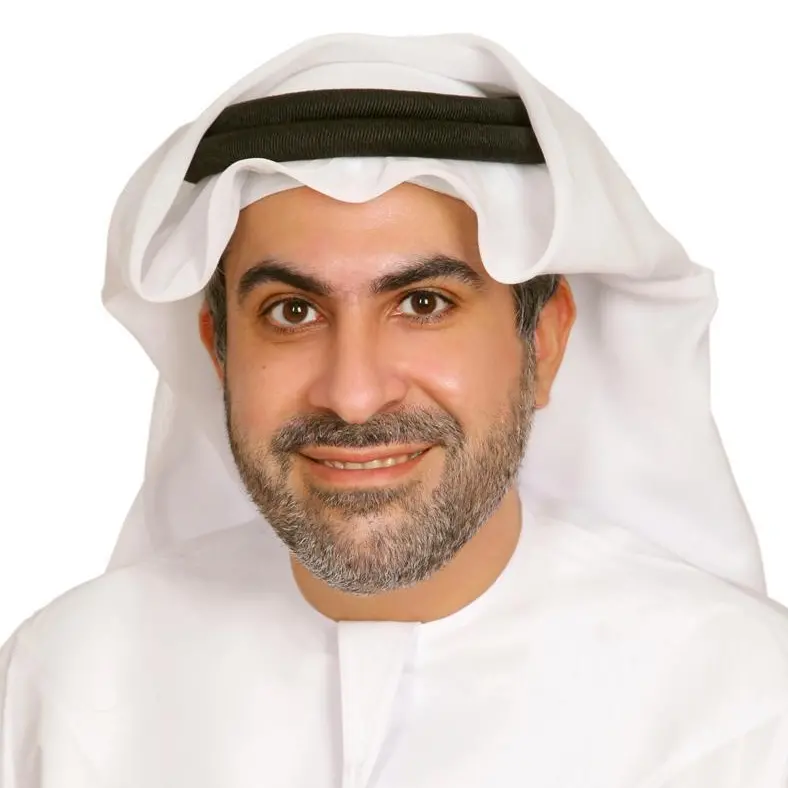PHOTO
Saudi Arabia makes up 53% of all healthcare projects in the region
JEDDAH — The healthcare construction market in the GCC appears to be growing at a steady rate as various high-value construction projects are being developed in the region.
According to the BNC Project Intelligence Database, there are approximately 709 healthcare construction projects with a combined estimated value of $65 billion out of which 133 healthcare projects are each worth over $100 million. These projects make up almost 80% of the total value of all healthcare projects in the region. However, there are also many healthcare projects on hold, including Dubai healthcare City in the UAE ($1.8 billion), Bahrain Health Oasis in Bahrain ($1 billion) and King Faisal Medical City in Saudi Arabia ($1 billion).
Saudi Arabia makes up approximately 53% of all healthcare projects in the GCC. The UAE has the second highest number of healthcare projects in region at 17%. The combined estimated value of healthcare projects between Saudi Arabia and the UAE is $40.6 billion, and they account for over 60% of total value of all healthcare projects. Kuwait constitutes only 6% of all healthcare projects but in dollar terms, Kuwait makes up around 11% of all total project values in the GCC. The variance is because of several mega construction projects in the country. Examples of some of the mega construction projects in Kuwait include Jaber Ahmed Al Jaber Al Sabah Hospital, Al Jahra Hospital Extension and the New Farwaniya Hospital Expansion. Each project is worth over $1 billion and they have a combined estimated value of $3.8 billion.
Moreover, GCC countries can use PPPs as a medium to manage increasing healthcare cost, to boost competencies in the healthcare system and effect systematic transformation in the sector. As per a Frost & Sullivan study, healthcare PPPs have enabled governments globally to cut their costs by as much as 25%. The PPPs would have to be tailored to the specific requirements of the particular GCC country and healthcare system. Directly adopting PPP models from overseas would prove ineffective as schemes would need to be altered to suit the country’s requirement. Governments across the world have successfully adopted PPP models that have helped them improve efficiency and reduce cost. Urbanization, demographic transition, and increasing levels of chronic diseases have rendered it expensive for governments to develop adequate resources and healthcare access for the masses. Hence, GCC countries are keenly exploring private sector contributions not only in the secondary, tertiary, and quaternary healthcare space but also in primary care facilities; however, this process is still in the nascent stage.
Fair instances of PPP deals can be seen across the GCC, particularly in KSA and the UAE, evident from the large number of international hospitals in these countries. The Abu Dhabi government has formed PPPs with major international hospitals such as Johns Hopkins, Cleveland Clinic, Varned, and Bumrungrad. Kuwait has formed a separate organization, Kuwait Authority for Partnership Projects (previously known as Partnerships Technical Bureau), to facilitate its PPPs. Kuwait also plans to launch the Dhaman scheme (mandatory health insurance for expatriates) as a PPP initiative which comes with its own healthcare network infrastructure; this is going to replace the current government health insurance required for a residential visa. These efforts have led to a rise in private prepaid plans and a drop in out-of-pocket expenditure on healthcare.
Among the GCC countries, Bahrain has the highest healthcare expenditure as a % to GDP of 5% for 2014 while Qatar’s healthcare expenditure to GDP was at 2.1%. However, Qatar leads GCC in terms of GDP per capita which stands at a whopping $96,733 in 2014 whereas the lowest GDP per capita is in Oman at $19,310. In terms of absolute healthcare spending, GCC spent $64.4 billion in 2014 as compared to $58.3 billion in 2013 registering a rise of 10.5%YoY.
Interestingly, GCC’s average GDP per capita stands remarkably higher than the world average, even almost equivalent to the developed world whereas the healthcare expenses per capita is slightly higher than the world average and markedly lower than that of developed economies which indicates sizeable room for growth in the healthcare industry in GCC. To prove that further, GCC regions also stand far behind the developing world, let alone the developed worlds in terms of healthcare expenditure (government) as a % of total (budgetary) expenditure.
Population growth is a driving force for any country’s healthcare services, which help in giving shape to the system and attract investments. The collective population of the GCC is around 53mn, as of 2015 and population has been increasing at a 10-yr CAGR of 4.0% which is quite high as compared to the world average of just 1.2%. High influx of expatriate population, already high birth rates and greater life expectancy are major factors driving that.
Life expectancy in the GCC improved to an average of 76.4 years in 2014 (as per World Bank) from approximately 62 years in 1970. This essentially means that statistically people are living much longer than what they used to do over 40 years ago, leading to slower subtraction from the population equation. Moreover, this also highlights the rise in the ageing population which draws attention towards the demand for specialized old age health centers and pain management centers. It should also be understood that an ageing population is closely associated with a drain on the healthcare resources since typically 4/5th of a person’s healthcare needs are incurred after his age of retirement.
Previously, a wide gap existed between the GCC and developed nations with regard to under-five mortality rates, which has now significantly narrowed. A child born in the GCC now has greater chances of survival, pushing up the infant age group size. This highlights the greater need for specialized pediatric-focused healthcare needs within the system.
To meet the growing demand for healthcare and reduce the burden of healthcare expenses on the public sector, some GCC countries have recently introduced Mandatory Health Insurance (MHI). This initiative has increased the private sector’s share in health infrastructure, establishing facilities growth in private care, which has led to expansion in health service utilization in the region. Saudi Arabia took the lead in implementing mandatory health insurance policy for the private sector, benefiting both locals and expatriates.
Qatar and UAE have also implemented mandatory health insurance, while Bahrain has had a compulsory health insurance scheme for nationals since 2003 and is planning to roll out mandatory insurance policy for expatriates. In Kuwait, expatriates must have health insurance in order to receive a residency permit, but this does not provide them access to Kuwaiti private health providers. Things will change however when the new Dhaman scheme is implemented through the PPP model which will require higher premium but in turn provide the expatriates access to a new state of the art hospital system.
Health insurance is expected to drive demand for medical services as out-of-pocket expenditures decrease, which in turn is expected to draw private investment into the healthcare sector. Therefore, MHI is expected to drive healthcare investment and development in the private sector and likely to witness complete implementation in the region.
Among the various global challenges related to health systems is the rising concern of non-communicable diseases (NCDs) and injuries. After handling infectious diseases over the past five decades through essential health services, countries are now struggling with the growing burden of non-communicable diseases and the risks related to them. The increasing prevalence of sedentary lifestyles and the move away from traditional, nutritious diets to fast-foods have led to an increase in diabetes, hypertension, obesity, cancer, heart conditions and other lifestyle–related diseases in the GCC. This has been exacerbated by the sharp increase in the income of population (represented by the GDP/capita).
As per International Diabetes Federation’s Diabetes Atlas, in 2015 all GCC countries with the exception of Oman were among the top 10 countries where diabetes was prevalent among the population aged between 20 and 79; Oman was among the top 20. The GCC average comes at a massive 19%, significantly ahead the 9% average for the world. The rising threat of non-communicable diseases in GCC would not only pressure healthcare financing but also affect economic efficiency as the rate of sickness among the working class would be higher. These factors, combined with an aging population, are projected to further pressure healthcare spending as the threat of NCD diseases continues to rise. According to PWC’s global strategy consulting team, individual GCC country studies show NCDs account for 9 – 30% of the public healthcare spending. Qatar has the highest spending per capita, with NCDs comprising 22% of the total healthcare spending. Bahrain, Kuwait, Saudi Arabia, and the UAE hold a median position wherein NCDs account for 7 – 11% of the healthcare spending. Oman has the lowest per capita healthcare spending and spends merely 6% of the total healthcare expenditure on NCDs attributed to its relatively traditional lifestyle.
The GCC had 600 hospitals in 2008 which grew to 684 by 2013 which exhibits a CAGR of 2.7%. Public sector hospitals dominate GCC’s hospital base constituting around 62% of the total as of 2013. Saudi Arabia and the UAE have the largest number of hospital with 65% of the total hospitals in Saudi Arabia, which is a function of their population; only 2% of the total hospitals are in Oman. The majority of general hospitals in the region indicate a clear opportunity for specialized and super-specialty hospitals. The Super speciality hospital is the one which focuses on specialities like Neurosurgery, Cardiac Surgery, Vascular Surgery, Surgical Oncology etc.
© The Saudi Gazette 2017












